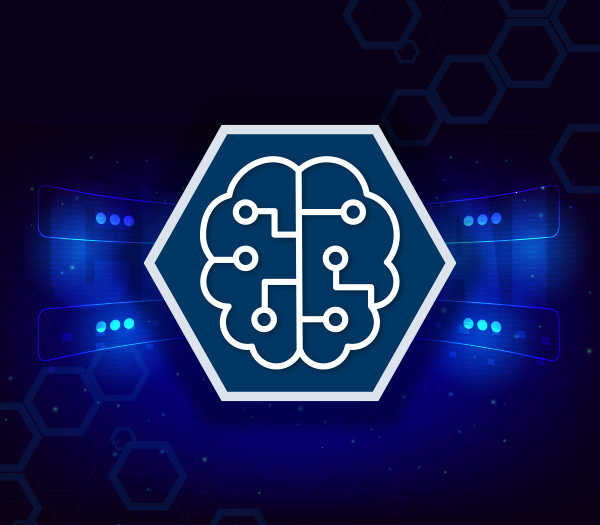The Chatter Behind ChatGPT: A Technical POV on the Latest AI Chat Bot

ChatGPT may be trending, but it’s actually been around for a while. In fact, there are other tools out there just like it. So why has it become so popular seemingly overnight? One factor is that it is open to the public and free to use, but most importantly this latest version represents a substantial leap in generative AI capability. It produces responses so authentic that people can’t distinguish them from human responses, making ChatGPT much more accurate and polished than its predecessors and current competitors.
What Exactly Is ChatGPT And How Does It Work?
GPT stands for “generative pre-trained transformer,” which is a natural language processing (NLP) model built with neural networks. A neural network is a form of AI that learns how to process data in a way that is inspired by the human brain. Applying this to NLP allows the technology to perform tasks such as answering questions and writing code.
The GPT that OpenAI developed (i.e. GPT-3 GPT-4) is an example of a large AI model, which is often referred to as a “backbone model.” ChatGPT was built on top of this backbone GPT model, with the addition of an interactive chatbot. This technology is trained using vast amounts of data so it “knows” how to respond to your questions. One of the reasons ChatGPT operates at such a high level is that GPT-3 is much larger than its predecessors in the number of parameters and the amount of training data used. This level of training is very expensive – it is estimated that training GPT-3 cost more than $5M in computation and required months using hundreds of high-end GPUs.
So why is it out there for free? It’s the same reason why most of Kitware so passionately keeps our technology open source–openness fuels innovation. While ChatGPT is NOT open source, the fact that its use is free and available to the public, with very few restrictions, means people can test the software out and share their feedback. GPT-3 can be extended and customized by anyone using a simple update interface, enabling developers to incorporate it into many applications and workflows with little cost.
The Ethics (or lack thereof) of ChatGPT
One of the biggest questions surrounding ChatGPT is that of ethics. Is it ethical to use it to do your homework, or write an article for you? (This article was written entirely by humans.) If you do, should this be disclosed, or should ChatGPT be listed as a co-author? What if it generated some of the core ideas of your work? Society is suddenly wrestling with these thorny issues in many public debates, but there are also the long-standing problems of ethical AI to be considered, now amplified by ChatGPT’s prominence. Is ChatGPT itself ethical? Does it follow any code of ethics or morality? The short answer is no. People have shared some of the outlandish responses they have gotten from the chatbot–both intentional (trying to prove/explore the limitations) and unintentional (accidentally discovering the limitations). Being that ChatGPT is not open source, the code and training data aren’t publicly accessible. This makes it difficult to trust the technology because you can’t understand why the AI gave you that particular response. (Read more on explainable AI) This can result in responses that are biased, discriminatory, and just downright offensive, without fully knowing what data or reasoning caused the AI to respond that way. ChatGPT is also not guaranteed to be factual, so you could end up with incorrect responses. This could result in a wide-scale spread of misinformation which can have a number of negative consequences.
A guideline that we use frequently at Kitware whenever there is a question of AI ethics is the U.S. Department of Defense’s five ethical principles for artificial intelligence. An AI can be evaluated against each of the principles–responsible, equitable, traceable, reliable, and governable–to determine if it’s sufficiently ethical for deployment. There are many other ethical AI tools out there you could use as well. Regardless, if you apply this exercise to ChatGPT, it’s clear that there are a few red flags and it does not meet all of the ethical AI standards of today. (Read more on ethical AI).
That said, these concerns shouldn’t prevent you from using ChatGPT. As long as you understand the limitations of this technology and use it appropriately, there are many applications where it is quite helpful.
Tech Like ChatGPT Isn’t Going Anywhere
ChatGPT may have caught on quickly, but it is here to stay. This technology has very practical and useful applications despite its limitations. People have already started using it to help them increase their productivity at work, school, and home. This increased automation will likely change the landscape of our current workforce, creating less demand for certain positions, but increasing demand for others. And while some see this as a cause for concern, if you look back at the past several decades, we’ve seen economic growth with each new wave of technology that automates higher-level occupations.
At Kitware, we’ve already started embracing this technology. In fact, many of our computer vision AI models use the same underlying model architectures and self-supervised training techniques as large language models like GPT. Many of our team members have expertise in these technologies and NLP, and the increased demand among our current and prospective customers is also leading us to hire NLP experts. Ultimately, we are excited to see where this new wave of AI technology takes us. If you are interested in learning more about NLP technology and responsible AI, you can contact our team.